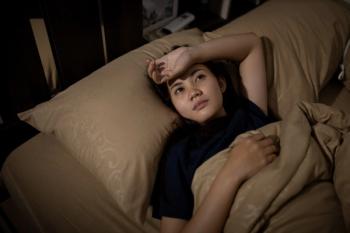
Case #2: 29-Year-Old Male With Type 2 Narcolepsy
Experts in sleep medicine present a case of a 29-year-old male with EDS, vivid dreams, sleep paralysis, and adult ADD, and share their initial impressions.
Episodes in this series

Richard K. Bogan, MD, FCCP, FAASM: I’m going to throw another case at you. We’ve got a 29-year-old male project manager who presents with excessive sleepiness. He also has vivid dreams and episodes of awakening in the night feeling as though he is paralyzed and can’t move. He feels short of breath and panics during that. His bed partner says he talks a lot, kicks and yells, and sometimes when he wakes up, he sees these images or hears somebody outside trying to break into the house. He is diagnosed with having adult ADD [attention-deficit disorder] and is placed on extended-release methylphenidate, which helped his sleepiness, interestingly enough, but he is still aggravated by the sleepiness. He can still doze off in the afternoon and has trouble with projects during the day, dozing off when he is not adequately stimulated.
His clinical course has been somewhat problematic because he does have anxiety, some performance anxiety, and the methylphenidate makes his heart rate go up and makes him more nervous. He has not had any episodes of muscle weakness with strong emotions. He’s diagnosed with having an anxiety disorder and placed on escitalopram. His BMI [body mass index] is 32, and his blood pressure is 129 over 89 mm Hg, so his blood pressure is a little high. His heart rate is 78 bpm. He is actually on metoprolol for tachycardia and anxiety. So we have a fellow who is a little overweight, with elevated blood pressure and an anxiety disorder, with those symptoms. I will go ahead and tell you his MSLT [Multiple Sleep Latency Test result] was 6 minutes, and he only had 1 sleep onset REM episode. What do you think?
Asim Roy, MD: There’s another REM dissociation we didn’t get into, which I forgot to mention, but REM behavior disorder might be a feature in narcolepsy as well, where people act out their dreams. Normally, we think about this in individuals in their 50s, 60s, and 70s if they develop REM behavior. It’s a whole different meaning, potential neurodegenerative disease implications with a synucleinopathy world like Parkinson disease or Parkinson-like syndromes. In narcolepsy though, you can have REM behavior disorder at a younger age, and it can be part of that REM phenomena. There was some description of that, it seemed like, potentially; we need to dive deeper. But for me, the PSG [polysomnography], I don’t think there was any mention of the results on the PSG on this case?
Richard K. Bogan, MD, FCCP, FAASM: He did have a bit of mild sleep apnea, with an AHI [apnea-hypopnea index score] of 6, and he had mild intermittent snoring.
Asim Roy, MD: He had mild sleep apnea, I don’t think that by itself explains the degree of sleepiness. Again, you can have REM dissociation, REM-related phenomenon with sleep apnea in normal individuals as well. But again, the profoundness of how often it’s happening and how intense they are, it’s hard for me to blame it on a mild degree of sleep apnea, but it’s possible. And then that 1 SOREMP [sleep onset REM period], to me, again, he’s on an antidepressant, and I’m assuming it was left on board during the test. That may have suppressed a second REM phenomenon, a SOREMP, potentially. But putting it all together, I still have a high suspicion there’s probably type 2 narcolepsy going on with underlying mild sleep apnea. In scenarios like this, he may have some blood pressure issues. He’s on metoprolol, so it might be suppressing his blood pressure already, and that’s slightly elevated.
I would lean toward treating his mild sleep apnea, whether it’s PAP [positive airway pressure] therapy or an oral appliance to manage that component. But my suspicion is his persistent sleepiness, those persistent REM phenomena, may not disappear just by treating the OSA [obstructive sleep apnea]. Then at that point, I would feel more confident saying this is most likely a type 2 narcolepsy and then tackling those REM-related phenomena that are disturbing to him.
Richard K. Bogan, MD, FCCP, FAASM: I think that’s a good point. With the escitalopram, we may have to call the psychiatrist or family practitioner and say, “Hey.” And I’d talk to the patient as well, “Is there any chance we can take this patient off this medicine?” They’ll have to be off of it for a while, probably at least 2 weeks, fluoxetine much longer, but at least 2 weeks before we do the study. Because…we don’t fully know, but there are enough observational data that suggest this is suppressing REM sleep and will affect our nap studies. So that 1 SOREMP may have been distorted by that. Asim, what do you think about solriamfetol in this case?
Asim Roy, MD: I think it definitely has value. He’s on a stimulant, he’s seen some benefit. But could we have a little more enhanced benefit with a nonstimulant option because of his concerns with blood pressure, tachycardia, and anxiety? There are many reasons why we should probably try to get him off the stimulant if we can. With solriamfetol, the data support that there might be very little if any heart rate or blood pressure effect. Then you can get the weight-promoting benefits without having those downstream adverse effects. I think anxiety was only seen in less than 2% or 3% of the cases, using solriamfetol. So again, it’s still possible to have those downstream adverse effects, but the probability is significantly less than the traditional stimulants. I think solriamfetol would be a great option for him…from a cardiovascular standpoint, the anxiety standpoint, and the sustained benefit of something that can last 9 or 10 or so hours. He’s a project manager, and keeping him awake throughout the day can be challenging I would imagine, so replacing the stimulant with solriamfetol, I think would have added value there.
Richard K. Bogan, MD, FCCP, FAASM: I would agree. I think in situations where we have all of this anxiety and tachycardia and issues, blood pressure, we’re going to move more obviously toward the modafinil, armodafinil, and of course the solriamfetol. Then again, thinking about drug-drug interaction and some of those things. Let’s go back to our first case of the young girl with type 1, and we put her on oxybate therapy. I’ve treated her, so she was placed on low oxybate therapy and had significant improvement in the sleep disruption and the vivid dreams paralysis, and the cataplexy. But she was still sleepy, and she was pretty insistent on taking oral contraceptives, steroidal oral contraceptives. What do we do there?
Asim Roy, MD: That’s a great point. As you know, modafinil and armodafinil have a drug-drug interaction. Pitolisant has that drug-drug interaction. So if we decide to go down that road, those are significant counseling discussions with the patient. Again, solriamfetol definitely has a role here in the sense that it does not have that drug-drug interaction, it’s renally metabolized, does not go through any of the cytochrome P systems. It would be the ideal option to allow her to continue the oral contraceptives, supplement the oxybate at night, and get her through the day a bit better; it would be my first choice. The argument there would be around the oral contraceptive contraindications.
Transcript Edited for Clarity
Newsletter
Receive trusted psychiatric news, expert analysis, and clinical insights — subscribe today to support your practice and your patients.


















